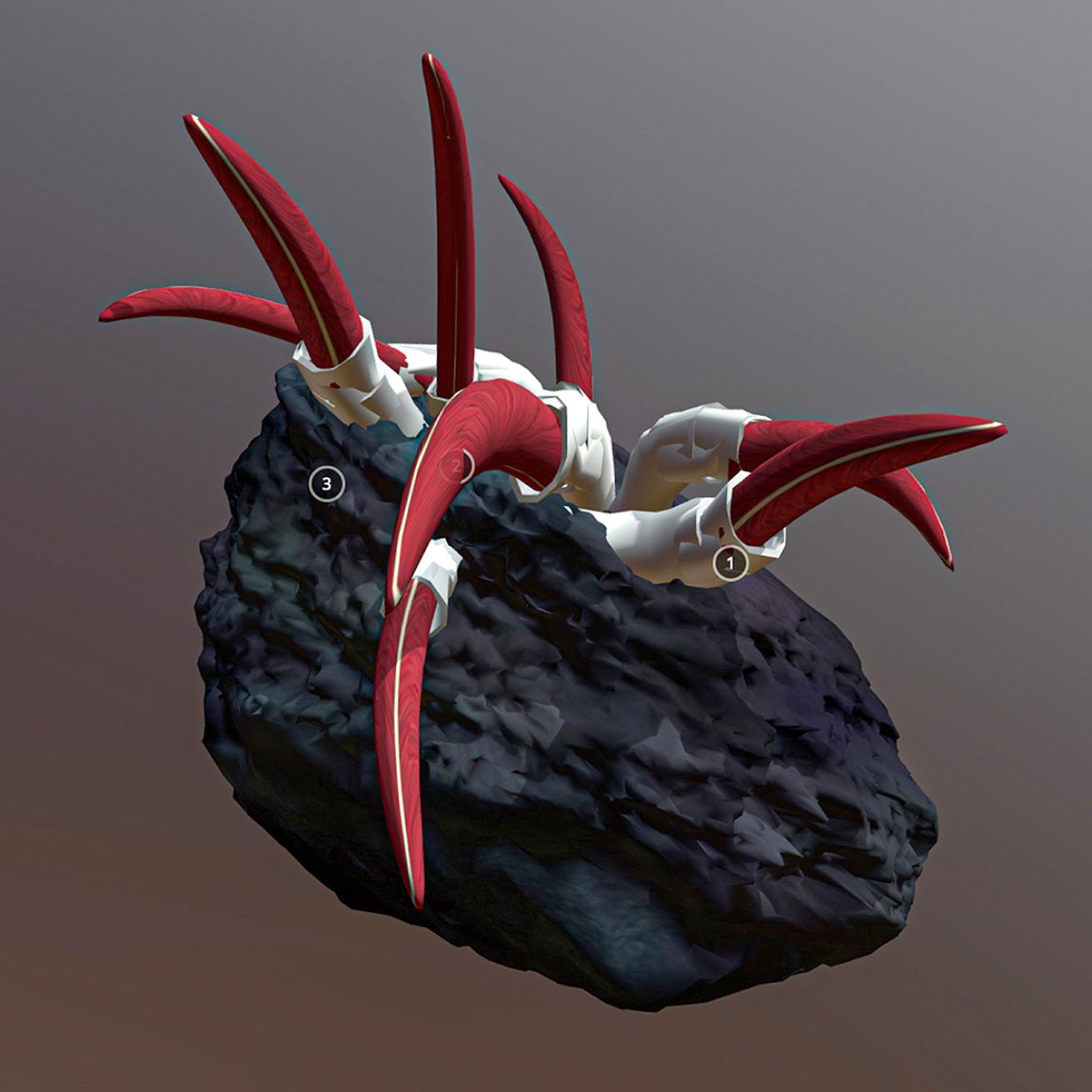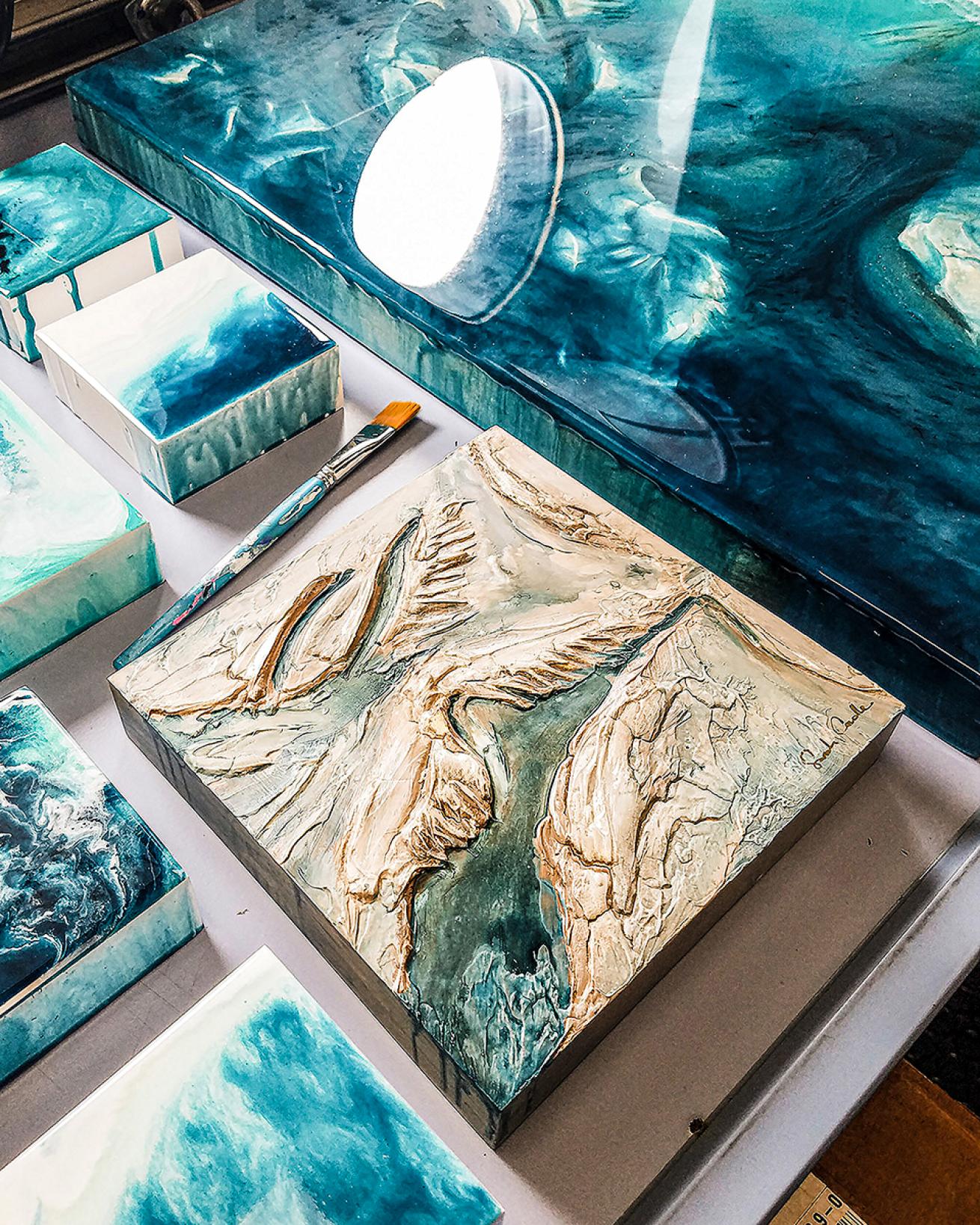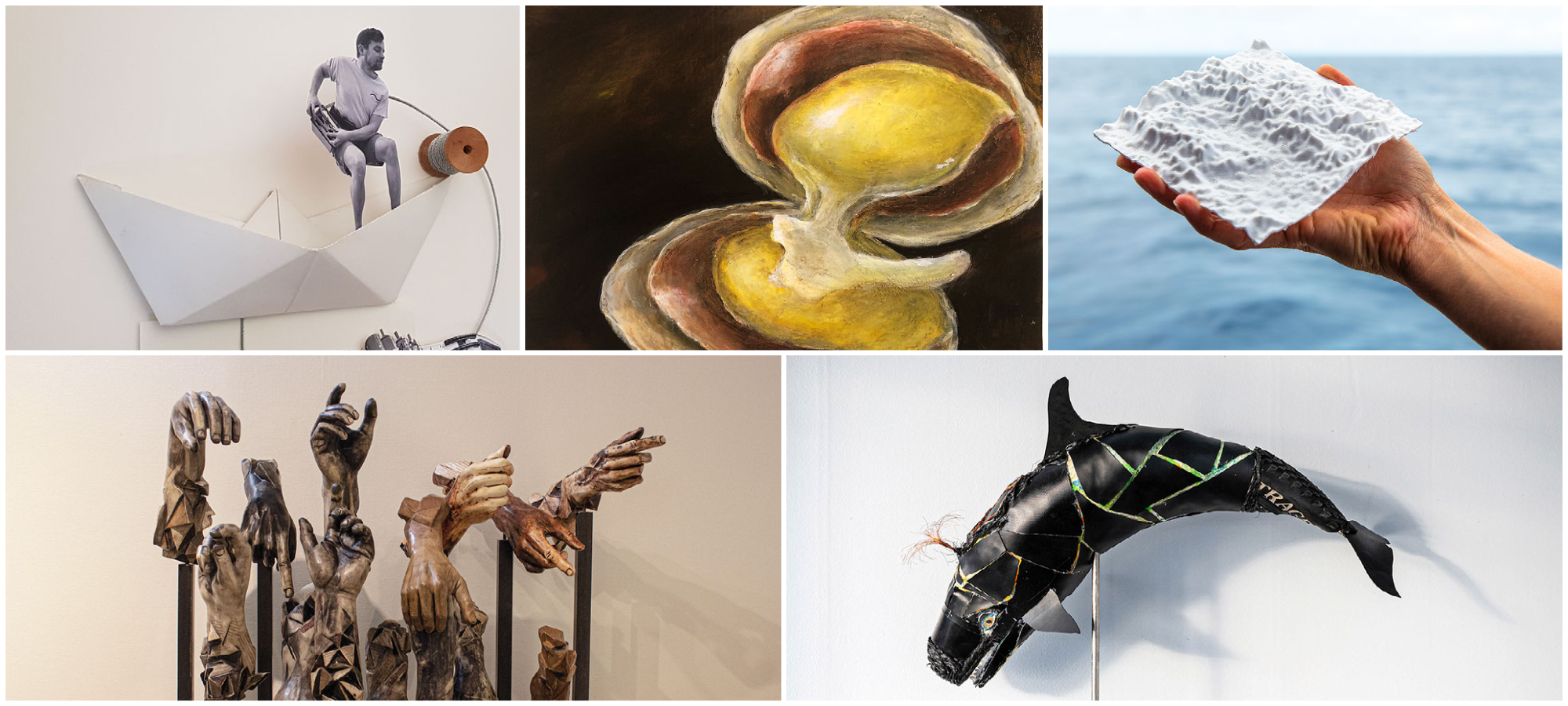Artists Sail the Open Ocean to Reimagine Marine Science
When R/V Falkor, a research vessel named for the dragon in the novel and film The NeverEnding Story, leaves port, it often has a most unusual crewmember: an artist.
As the seas pitch and the data rolls in, creatives collaborate with scientists to bring their analysis to life. They convert research findings into eye-catching pieces to make marine science alluring beyond the bounds of a dusty research journal. Scientists on Falkor expeditions have mapped the seafloor, found the world’s longest animal and a reef taller than the Empire State Building, and searched for reclusive whales.
Since 2015, more than 30 artists from seven countries have gone on to represent such discoveries in unexpected ways, including an art installation of plastic bags moving in accordance with wave data, a whale sculpture crafted from recycled materials discarded aboard Falkor, and a painting made by the ship’s remotely operated vehicle.
“Artists are amazing storytellers that let us look at the ocean science taking place on Falkor in a very unique way,” says Carlie Wiener, director of communications and engagement strategy at the Schmidt Ocean Institute, which runs the Falkor expeditions.
“One of the really unique things about this cruise was having more artists than we had scientists,” says Deborah Smith, an SOI marine technician, of her 2019 mission to map a slice of the Pacific seafloor in search of methane seeps. “But really doing that through the eyes of the artists was one of the really unique opportunities.”

Annabel SlaterA 3D model of a group of giant tube worms, which grow near deep sea hydrothermal vents.
The artists are similarly moved. “Both as a scientist and an artist, I was prepared to make ceramic sculptures of biodiversity and species interactions,” says Dr. Fernanda Oyarzún, research associate of the Coastal-Social Ecological Millennium Institute. “But this expedition was on autonomous research—robots—so I had to think a little bit out of my box.” Using clay collected from more than 5,500 feet below the surface, Oyarzún created sculptures of crewmembers’ hands in positions representative of their roles in the expedition.
“There’s been a wave of scientists and schools that decided engaging with the artist brings a new perspective,” says Christine Lee, an artist-in-residence during Falkor’s August 2019 Seamounts expedition. During her voyage, she translated eddy information into embroidery pieces and experimented with 3D printing, embossing, and folded-paper polyps. “It doesn’t necessarily change the data they have, but what it does potentially do is ask different questions, both from the artist side and scientist side.”

Sarah CaudleRidges and valleys of the seabed, sculpted buy Sarah Caudle, are covered in pouring resin.
Due to COVID travel restrictions, the past four Artist-at-Sea participants have been Australians not in need of an international flight. Taloi Havini, one of these recent participants, is the program’s first indigenous artist. Her work based on mapping data collected during the Ice Age Geology of the Great Barrier Reef expedition will be on display at Ocean Space in Venice, Italy, through mid-October. Going forward, Wiener says, the program will focus on emphasizing creators who are local or indigenous to the regions in which the ship sails.











